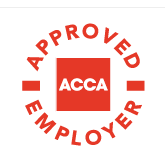New tax year, new allowances
While the 6th of April may be just another Saturday to most people, it marks the start of a new UK tax year. On the most part, this means higher minimum wages and higher allowances!
Below is a short summary of some of the changes that are most likely to impact employees, the self-employed and business owners (Rates may not be applicable in Scotland):
National Living Wage and Minimum Wage
From 1st April 2019 National minimum wage will increase by the following:
- 4.9% from £7.83 – £8.21 for those 25 and over
- 4.3% from £7.38 – £7.70 (21-24)
- 4.2% from £5.90 – £6.15 (18-20)
- 3.6% from £4.20 – £4.35 (16 -17)
- 5.4% from £3.70 – £3.90 (Apprentices)
Personal Allowance
Essentially your general-purpose allowance for tax-free income is increasing from £11,850 to £12,500, saving basic-rate taxpayers £130.
The Basic Rate Band
An increase from £34,500 to £37,500 means that higher-rate taxpayers will pay the lower rates of tax on an extra £3,000 of income.
Student Loan
New thresholds before you start repayments:
| Plan 1 | Plan 2 (Loans on or after 01/09/2012) | |
| 2019/20 | £18,935 | £25,725 |
| 2018/19 | £18,330 | £25,000 |
National insurance
Class 1 NIC (Employees and employers start paying NIC): On earnings over £719p/m at 12%
Class 2 NIC (Flat rate for self-employed with earnings over £6,365): £3.00p/w
Class 4 NIC (Self-employed start paying Class 4 NIC): On earnings over £8,632p/a at 9%
Allowances remaining unchanged
Corporation Tax: 19%
VAT threshold: £85,000
Income limit to retain 100% of Personal Allowance: £100,000
Additional Rate threshold: £150,000
If you would like any further guidance on how the new tax year might affect you, feel free to get in touch.








